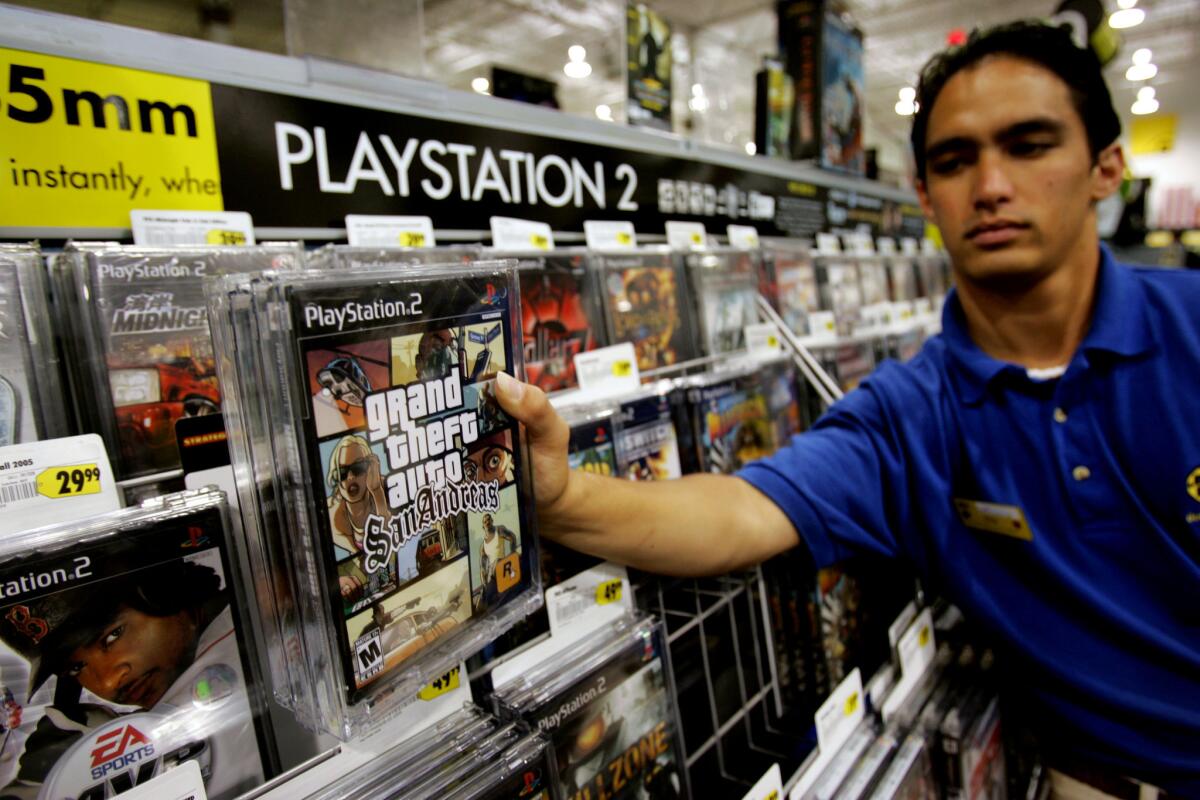How to rate video games

- Share via
One of the most valuable pieces of information about a video game is also the simplest: the rating that tells parents what ages the story and graphics are suitable for and why it might not be right for younger users. But as games have moved from computers and consoles to mobile devices, the rating systems have multiplied. Apps for the iPhone and the iPad, Facebook, Android devices, BlackBerrys, Kindles and Windows phones all go through separate ratings processes, each with its own set of labels. The lack of a common system confuses parents and irritates game publishers, whose titles often span multiple platforms with incompatible ratings. Entertainment Software Assn. Chairman John Riccitiello, head of game developer Electronic Arts, called Wednesday for a single rating system that would work across all platforms. It’s the right move, and the Apples and Facebooks of the world should support it.
The video game industry established a voluntary rating system in 1994, creating the Entertainment Software Ratings Board to evaluate and rate games before they were released. It’s not a perfect system, and groups such as Common Sense Media have emerged with alternatives for parents who aren’t satisfied with the ratings supplied by the industry. But the board’s ratings are simple and clear, and they come with important enforcement mechanisms: Consoles can be programmed not to allow games rated for older players, and major retailers have agreed not to sell adult-rated games to minors.
But the arrival of new platforms led to so many new downloadable games being released, the ratings board couldn’t keep up with the volume. That left each platform provider — such as Apple, Facebook and Google — to come up with its own system. The most common approach is to have game providers assign an age-based rating for their products, then let parents set the highest rating their children can download.
Those age-based ratings are not only inconsistent across platforms, they reveal nothing about a game’s content. Riccitiello is backing the Entertainment Software Assn.’s effort to extend the board’s familiar, descriptive ratings to all platforms and to any country that wants to sign on. Instead of evaluating games itself, the ratings board would have developers rate their own games through an interactive process designed to apply the same standards the board uses on packaged video games. The board would then monitor compliance, paying particular attention to the most popular titles and the ones that draw complaints.
Again, this approach won’t satisfy people who don’t like the idea of the industry applying its own ratings to its products. But the association’s effort, which is expected to be ready for global use next year, would be a significant improvement over the inconsistencies of the current system. Embracing it would raise a number of tough issues for Apple and company, including what to do about the thousands of games that are already available. That’s all the more reason for those companies to get on board sooner rather than later.
More to Read
A cure for the common opinion
Get thought-provoking perspectives with our weekly newsletter.
You may occasionally receive promotional content from the Los Angeles Times.




